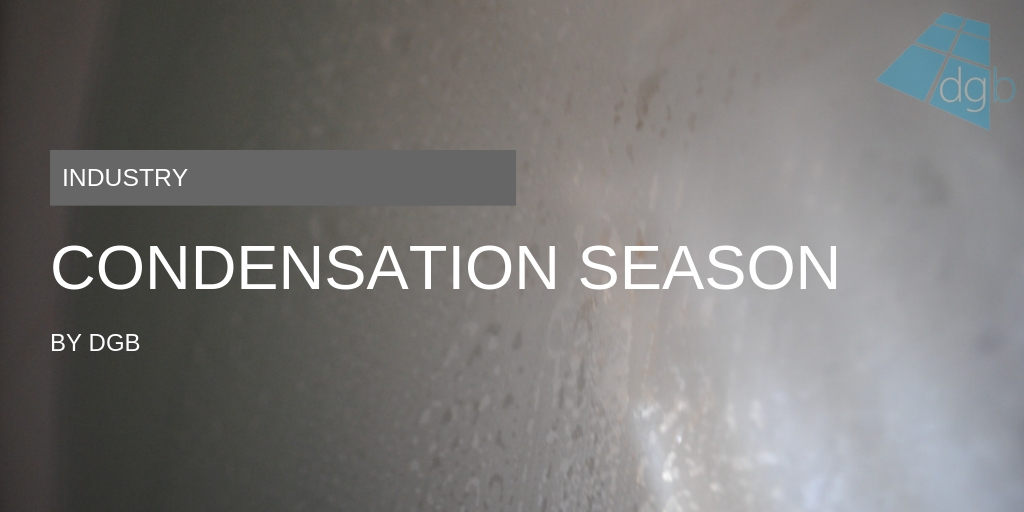Strictly speaking, it’s still Summer. In reality, Autumn (fall for my US readers) is here. The temperatures have dropped, it’s raining, it’s cloudy and the foliage is on the turn. We can’t complain, we’ve had a hell of a summer.
Part and parcel with this time of year is external condensation. A bi-product of energy efficient windows that started to make headway over a decade ago. A problem that is as constant as time itself. So what do you need to do during this time of year, and what can be done to stop it becoming a problem in the future?
Education
In previous posts on this topic I have written about the need for education. Installers need to be speaking with their home owners about the potential for external condensation on their new windows during this time of year and again during Spring. As we know, it only happens during certain times and certain temperatures, and I’ll go into the science of it a bit later. But installation companies need to be warning home owners that during certain times of year and certain temperature variations, this phenomenon will occur, and there is absolutely nothing to be concerned about.
External condensation is simply a bi-product of a more efficient window. At the dawn of this new generation of window we of course we unaware that such a think might happen. Roll on a few years when plenty had been installed, this was an issue that become more and more apparent. Window standards are only going to get better in the future, so we cannot bury our heads and hope this might go away one day because it won’t. We just need to tackle it head on and be straight with our home owners.
As a habit, we speak to our own customer at our place about external condensation, why it happens and when they can expect it to happen. Pretty much every customer I have ever spoken to about this, prior to installation, has been perfectly fine with it. They seem to have been glad to have been told and appreciated the advance information.
For installers, this is the key. Educating home owners prior to the event not only prepares them for it, but also stop potential future remedial calls where you can’t really do anything about it anyway.
The science
This is how and why external condensation is formed, according to the experts at Pilkington:
What Causes External Condensation?
Condensation is caused when the outside temperature of glass is lower than the temperature inside. Cold nights and dropping temperatures result in the formation of water vapour on the external outer panes of windows.
Moisture condenses out of the air onto a cold surface at what is known as dew point. The dew point temperature is the temperature at which the air can no longer “hold” all of the water vapour which is mixed with it. Some of the water vapour at this point must therefore condense into liquid water.
Typically in the spring and autumn months the dew point can be comparatively higher, causing condensation to occur more regularly.
Condensation and Modern Glazing
Condensation on the external surface is becoming more common as the types of glazing units being fitted into homes today are much more thermally efficient than in the past. The more thermally insulating the glassis, the lower the outer pane temperature is likely to be and the greater chance condensation will occur on external surfaces. With traditional style single glazing and older style double glazing, a large proportion of heat was lost to the outside through the glass.
Can it be stopped?
Over time companies like Saint Gobain and Pilkington have invented anti-condensation glass in response to this growing phenomenon. Saint-Gobain called theirs SGG VIEWCLEAR® II and Pilkington called theirs…drumroll… Anti-Condensation Glass. Both have come to market to give IGU makers and installers a choice if they feel they really need an option to help counter condensation.
My gut instinct however is that they don’t sell much of it because the demand for it isn’t really there. External condensation is only a temporary effect and only present during certain times of year. It’s not around long enough for installers to really feel that this is a pressing problem.
That being said, these are two products readily available, assuming the supply issues aren’t in play, that IGU manufacturers can call upon if demand from their own customers requires it.
So, my advice would be to get that information out and up front as soon as you can when speaking to clients who are set to have new windows done by you. It would also help to establish some online resources so you can direct people to it when they have questions and queries. The easier you make it the less chance there is of a home owner complaining that they were never told!
To get weekly updates from DGB sent to your inbox, enter your email address in the space below to subscribe:
By subscribing you agree to DGB sending you weekly email updates with all published content on this website, as well as any major updates to the services being run on DGB. Your data is never passed on to third parties or used by external advertising companies. Your data is protected and stored on secure servers run by Fivenines UK Ltd.






